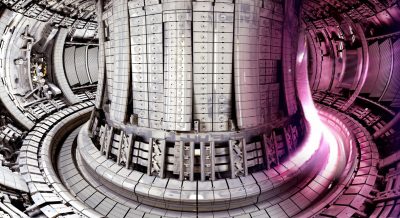
The latest number of the prestigious Nuclear Fusion journal co-published by IAEA and IOP Publishing is a Special Issue of selected papers originating from the 16th IAEA technical meeting on energetic particles in magnetic confinement systems—theory of plasma instabilities. Held in Shizuoka, Japan, on 3–6 September 2019, this meeting brought together about 100 experts from nuclear fusion research sites worldwide to discuss the physics of energetic particles and plasma instabilities, at the first joint meeting from the two scientific disciplines.
The Special Issue contains the following three papers with contributions from our group related to heating fusion plasmas with electromagnetic waves in the ion cyclotron range of frequencies (ICRF) in ITER and JET.
First, the paper “The impact of anisotropy on ITER scenarios” by M.J. Hole from Australian National University, Australia reports on the impact of anisotropy to tokamak plasma configuration and stability, with focus on analysis of the impact of anisotropy on ITER pre-fusion power operation at a plasma current of 5 MA and a magnetic field of B = 1.8 T with ICRF heating.
Second, the paper “Plasma heating and generation of energetic D ions with the 3-ion ICRF + NBI scenario in mixed H-D plasmas at JET-ILW” by Y.O. Kazakov (Laboratory for Plasma Physics of the Ecole Royale Militaire / Koninklijke Militaire School, Belgium) discusses the three-ion ICRF + NBI synergetic scheme in H-D plasmas on JET. It shows that NBI ions can efficiently absorb the wave power at the mode conversion layer, where the wave polarization is particularly favourable for ion cyclotron heating through their Doppler-shifted resonance.
Finally, the paper “Excitation of elliptical and toroidal Alfvén eigenmodes by 3He-ions of the MeV-energy range in hydrogen-rich JET plasmas” by V.G. Kiptily (Culham Centre for Fusion Energy, United Kingdom) shows that ellipticity-induced Alfvén eigenmodes (EAEs) and toroidal Alfven eigenmodes (TAEs) are excited by ICRF-generated 3He ions of the MeV-energy range in hydrogen-rich JET discharges. The orbits of fast ions measured by a fast ion loss detector were traced back into the plasma and the locations of the TAE and EAE were identified.
Please do not hesitate to contact us via fusion@bsc.es if you would like to receive an electronic copy of any of these papers.

Source: Nuclear Fusion
